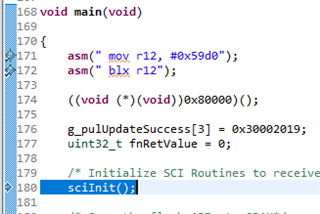Dear TI Team,
Branch assembly instruction for Jump to Application Address.
Which and how the assembly instruction should be used to jump to Application code from Bootloader. The Assembly Instruction has to be written in C file.
Thanks & Regards,
Vijay B. Shinde


